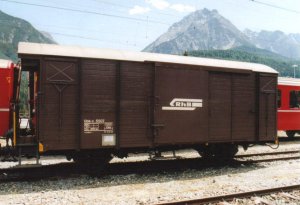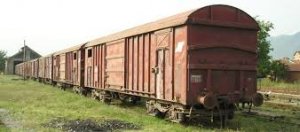N
NP2626
Guest
Does anyone have any input into why here in North America railroads use a set of two, two wheeled trucks per car end VS. the single wheel sets used on each end of a car in Europe and other locations? The two wheeled trucks would seem the better choice to me as the trucks align themselves with the track. However, obviously in Europe and other locations where they use a single set of wheels on each end of a car, this method is successful, also. Just wondering, again! Looking over photos of European Freight Cars, I have seen that single wheel sets are not the only way that they build fright cars, some also have trucks.




Last edited by a moderator:

